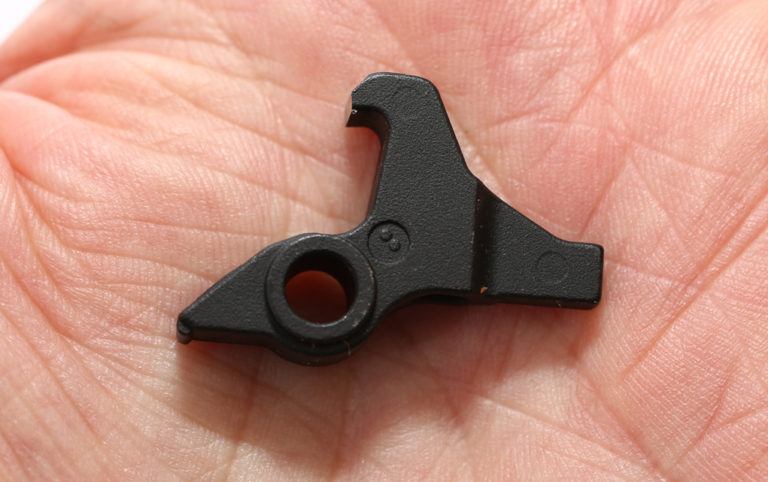
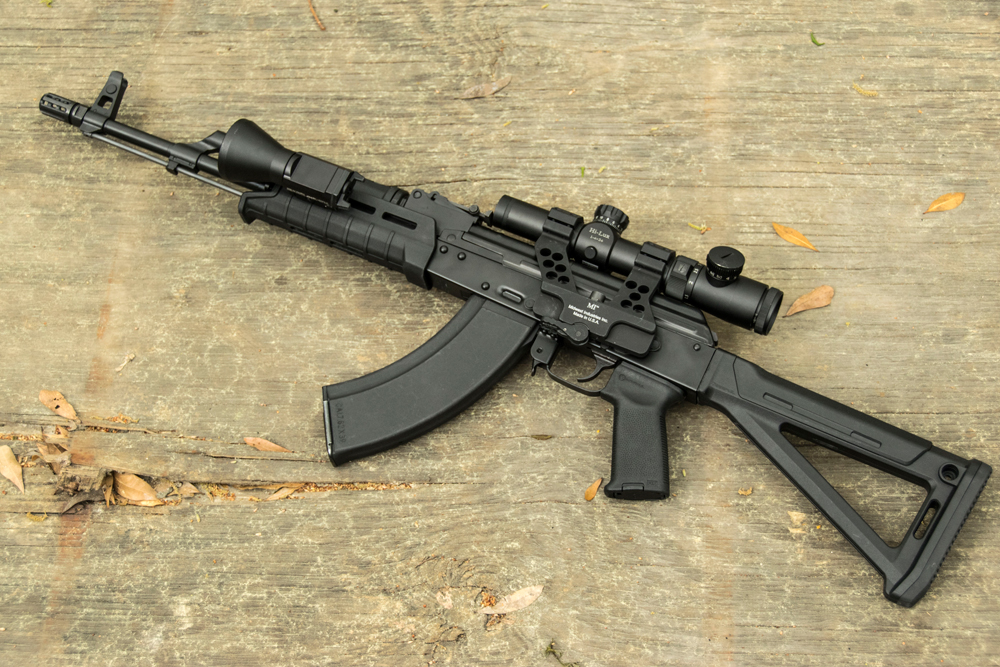
Stock AK Triggers are not known for their crisp, clean breaks. But there is something that can be done about this with some simple modifications or upgrades.
The AK has…a very interesting trigger. For a rifleman accustomed to a “clean, crisp, 3-pound” trigger, the AK is not just odd, it can be maddening. First of all, there is nothing crisp about it. It has a lot of travel. Now, you can call this creep, or you can view it more like the double-action stroke of a revolver trigger.
It also is light for a rifle trigger, or so it seems, once you get the trigger moving. Just about the time you get used to the trigger moving…oops, it just went off. You do not “prep” an AK trigger. Once you decide to fire, you stroke through it, keeping the sights aligned. This is not an aspect of the AK that we covered in the first volume, as we were focused on building, not tuning. And, we were all building them to be as much like the originals as possible. The attitude was, “If Spetsnaz can deal with trigger slap, then the rest of us can, too.”
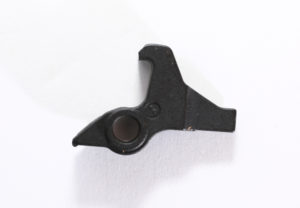
One annoying thing is that in some models, the trigger is prone to what is known as “trigger slap.” This happens when the hammer, being cocked by the bolt carrier, slams back down against the trigger, forcing it back against your trigger finger. It would be bad enough if it were simply slapping you. But since it occurs in the follow-through phase of the shot, your trigger finger is pressing hard on the trigger, holding it back.
One solution is to replace all the parts. And since you have to do that when building a parts kit (not that there’s a lot of that anymore) you simply replace them with parts that don’t slap. However, if you have an import and it slaps, you can do the same thing — replace the parts. Not because you have to be 922(r) compliant, but because you want to enjoy shooting.
Before we go swapping out parts, let’s look at why it happens, and how you can take care of it without buying new parts.
The AK has what is known as a two-stage trigger. The sear and disconnector hooks are built into the trigger. The sear hooks are a fixed feature of the trigger, while the disconnector is a hinged, spring-loaded part.
When you fire your AK, the hammer pivots back via the bolt carrier, and the dual hooks of the hammer slam down into the cam edge of the disconnector. The disconnector pivots out of the way, and then, powered by its spring, snaps back to catch onto the rear hook of the dual-hook hammer sear surfaces. When you release the trigger for the next shot, the trigger pivots, allowing the disconnector to pivot out of the way and release the hammer, in the process dropping it onto the trigger sear hooks.
The next step is when you fire. The trigger pivots under your finger, and the sear surfaces of the trigger pivot forward, eventually sliding off of the hammer sear surfaces, releasing the hammer. As the trigger pivots, it also brings the disconnector hook back into the pivot path of the hammer hooks on their return. (But in this part of the cycle they are underneath the hammer hooks and do not interfere with the firing press.)
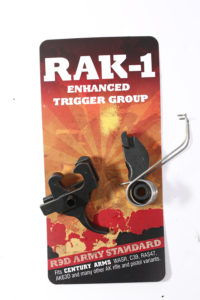
Trigger slap happens when the disconnector, whacked by the hammer, pivots back out of the way. If there is not enough clearance inside the trigger trough, the back end of the disconnector slams into the trigger itself. Since the impact point of the disconnector trigger strike is behind the pivot point of the trigger, the impulse acts to cam the trigger forward. This happens at speed while you are holding the trigger down, so your finger takes the brunt of the impact as the trigger is slammed forward.
Ouch.
So, the solution, in theory, is to remove metal so the back end of the disconnector can’t contact the trigger when the disconnector is cammed back. This means taking all the trigger parts out of the receiver, looking for the contact point, and then filing or grinding that area clear.
This is simple to describe, but not always easy to do. First, the hardness of the metal can vary. You may find that a file slides right off. Or you may find that the parts are soft, and a brief touch up on the bench grinder wheel is all that is needed.
Avoid the temptation to address the problem by removing metal from the back of the trigger. Unless you have a milling machine, and can reach into the slot to take some metal out, you’re best just doing the work to the disconnector.
That’s what you do if you are going to work with the existing parts. Why modify the existing parts? If you happen to have a trigger set that produces an acceptable trigger pull, that’s reason enough. If you have a trigger pull that, aside from the trigger slap, is good or even exceptional, you would be an idiot to replace the parts with new ones. Unless you’re an inveterate experimenter, of course. So if it is good enough, leave well enough alone.
If not, you can always simply replace with a new trigger assembly, such as the RAK-1 from Century Arms, or one of the ALG Defense trigger kits.
There’s one other detail to keep track of — single versus double hook. Mechanically, the double hook uses the disconnector as a trigger stop. This means the disconnector catches the hammer and releases it, and is used as a trigger pull stop to bear against the trigger near the end of the trigger press. This sometimes can be felt as a stop, while at other times it cannot.
This design feature is stolen directly from Browning, and he used it to make the trigger pull cleaner. It was used to great advantage on the Garand, and was a great part of its success as a target rifle.
The single hook design does not use the disconnector as a stop, and depends on a very large sear overlap serving as the safety and trigger press control.
The history, design, implementation and incorporation of the double and single hook, over the decades and in various countries and models, could fill a book. Or at least, several chapters of an encyclopedia, and is not something we need to dive into here. Just keep in mind that some models will have a double-hook design, some a single hook, and replacement triggers usually are made to fit into either. Yes, that’s right, the double- and single-hook parts are meant to go into double- or single-specific receivers. So, if you happen to have a single-hook receiver, and double-hook parts, you’ll find they won’t fit without mods. That’s annoying, but the Soviets and Chicoms were not interested in making things easy for us. On the contrary, they simply wanted as many rifles as they could make.
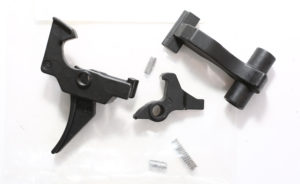
Century Arms RAK-1
The RAK-1 is a parts set from Century Arms that replaces all the internals of your AK. So, if you are building, they comprise three parts for 922(r) compliance. If not, you would be wise to replace all, rather than mess around trying to install one or two of them in a vain attempt to produce a better trigger pull. You’ll be better off with all three.
Century makes the parts out of a steel alloy, then heat treats them for a long service life and smooth engagement. They also made sure the disconnector was modified so it doesn’t create trigger slap. While they were at it, they modified the design so that, despite being a double-hook trigger, it will fit into receivers made for single-hook triggers.
As a bonus, Century includes a trigger sleeve, which serves as a slave pin. It’s handy because you can assemble the hammer, spring and trigger with the sleeve, and then slide everything into the receiver. Then, when you press the trigger pin across, it presses the sleeve out of the way, so you don’t have to have three hands and a stick to install all the parts.
The parts come with instructions, as if you need instructions to swap parts in an AK. But still, it is a good thing on their part.

ALG Defense
ALG Defense, while maintaining the critical dimensions of the AK trigger and hammer, took liberties with the parts’ cosmetics. The single hook, while shorter than your typical AK single hook, is machined to a crisper engagement, and the lines of the parts are more European or American than Russian. (It is hard to describe, but take a look and you’ll see.)
They use triple alloy steel, which means it is most likely a chrome-moly Vanadium steel. Whatever it is (and ALG Defense isn‘t saying), it is good, which is what we’d expect from the folks there. It comes with the needed disconnector spring, but you’ll either have to use the original hammer spring, or add an ALG Defense AK hammer spring to make things work.
One visible change to the trigger from ALG Defense is the shape of the bow. The original AK trigger has a sharp curve that hugs your trigger finger. The ALG trigger is a more open curve, providing a smaller contact pad, which aids in a cleaner trigger pull.
As an aid to fitting, ALG Defense includes a pair of roll pins, and have added a spot on the trigger to install one of them. This is to ensure your safety lever actually makes contact with the trigger when on Safe.
The AK has been built on five continents (as far as I know, no one made AKs in Australia, and there aren’t any in Antarctica) over the previous seven decades. The idea that they all have triggers that properly contact all safety levers is absurd. So, ALG made it easy, there’s a way to make the trigger and safety meet when and where they’re supposed to.
The ALG Defense trigger set comes with extensive instructions, the kind of explanatory overkill of which I heartily approve.
This article is from the Gun Digest Book of the AK & SKS, Volume 2.

Next Step: Get your FREE Printable Target Pack
Enhance your shooting precision with our 62 MOA Targets, perfect for rifles and handguns. Crafted in collaboration with Storm Tactical for accuracy and versatility.
Subscribe to the Gun Digest email newsletter and get your downloadable target pack sent straight to your inbox. Stay updated with the latest firearms info in the industry.

![Best Concealed Carry Guns In 2025 [Field Tested] Wilson Combat EDC X9S 1](https://gundigest.com/wp-content/uploads/Wilson-Combat-EDC-X9S-1-324x160.jpg)


![Best 9mm Carbine: Affordable PCCs [Tested] Ruger Carbine Shooting](https://gundigest.com/wp-content/uploads/Ruger-Carbine-Shooting-100x70.jpg)
![Best AR-15: Top Options Available Today [Field Tested] Harrington and Richardson PSA XM177E2 feature](https://gundigest.com/wp-content/uploads/Harrington-and-Richardson-PSA-XM177E2-feature-100x70.jpg)
